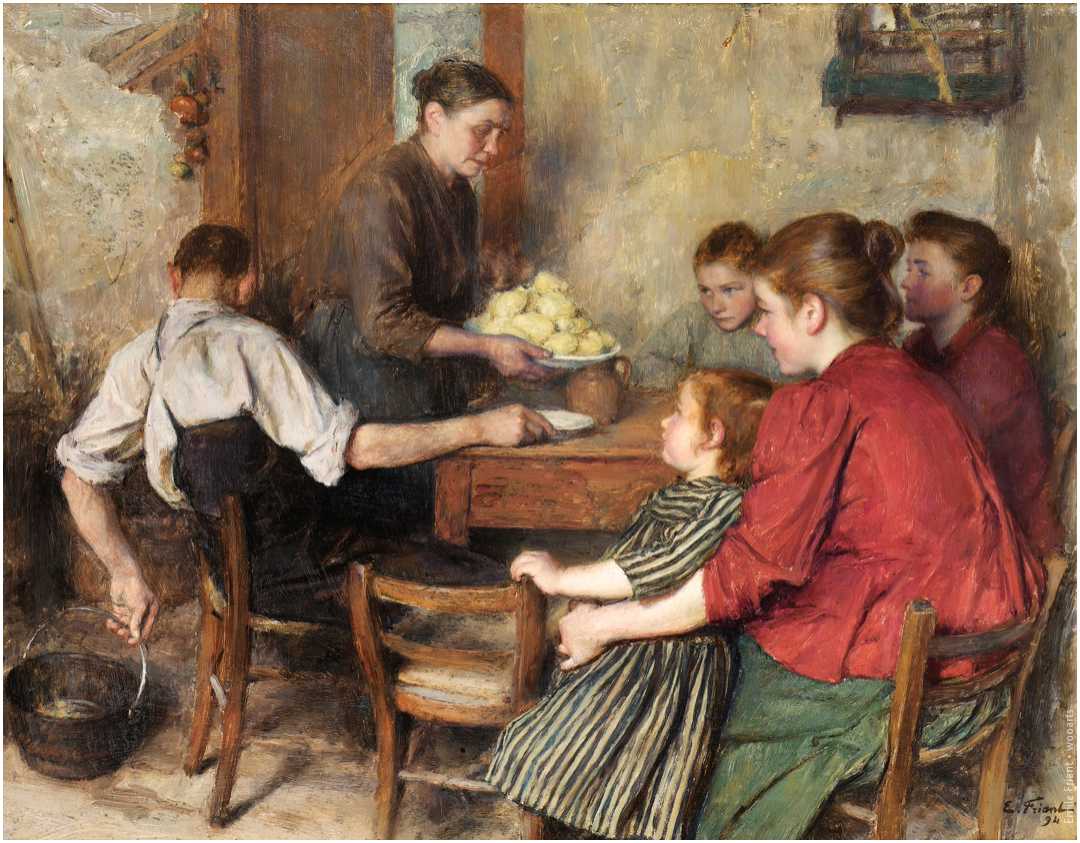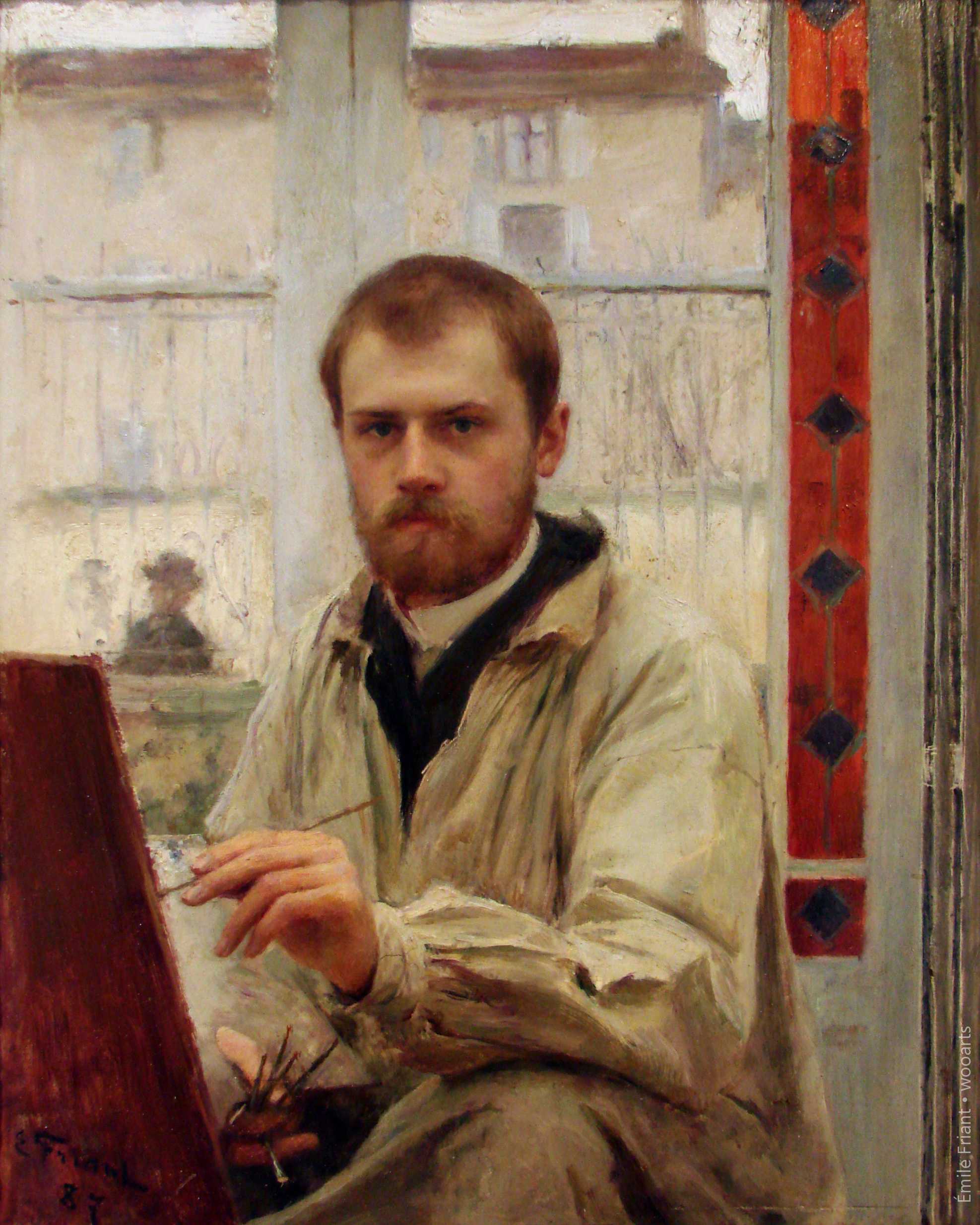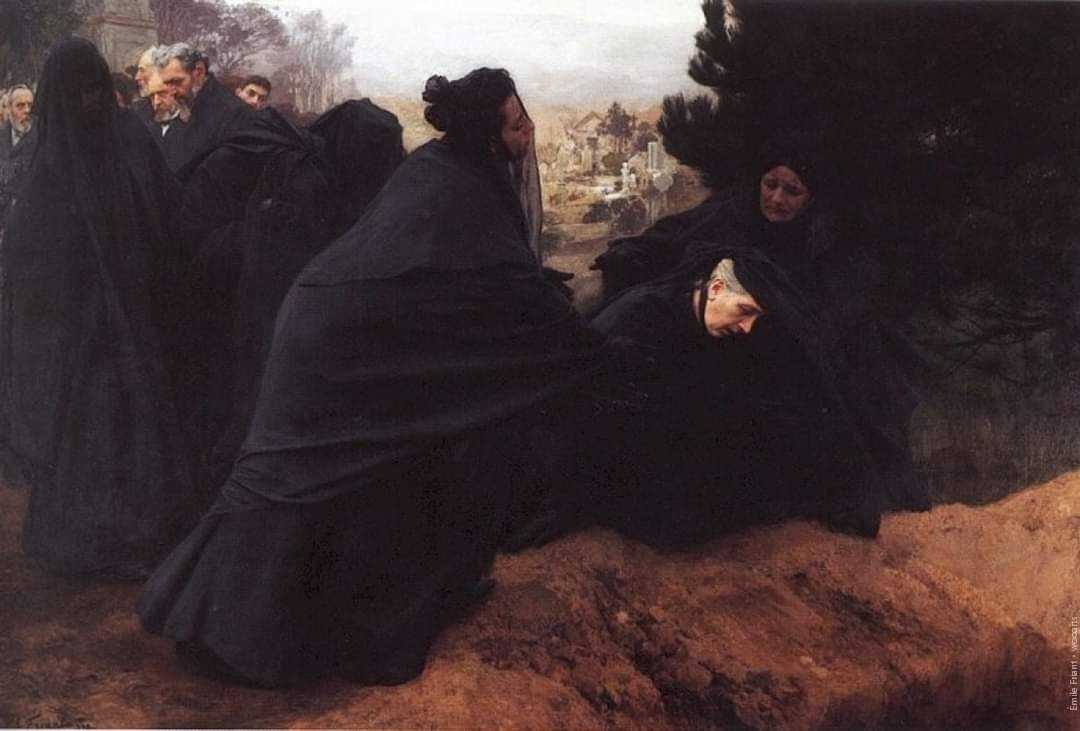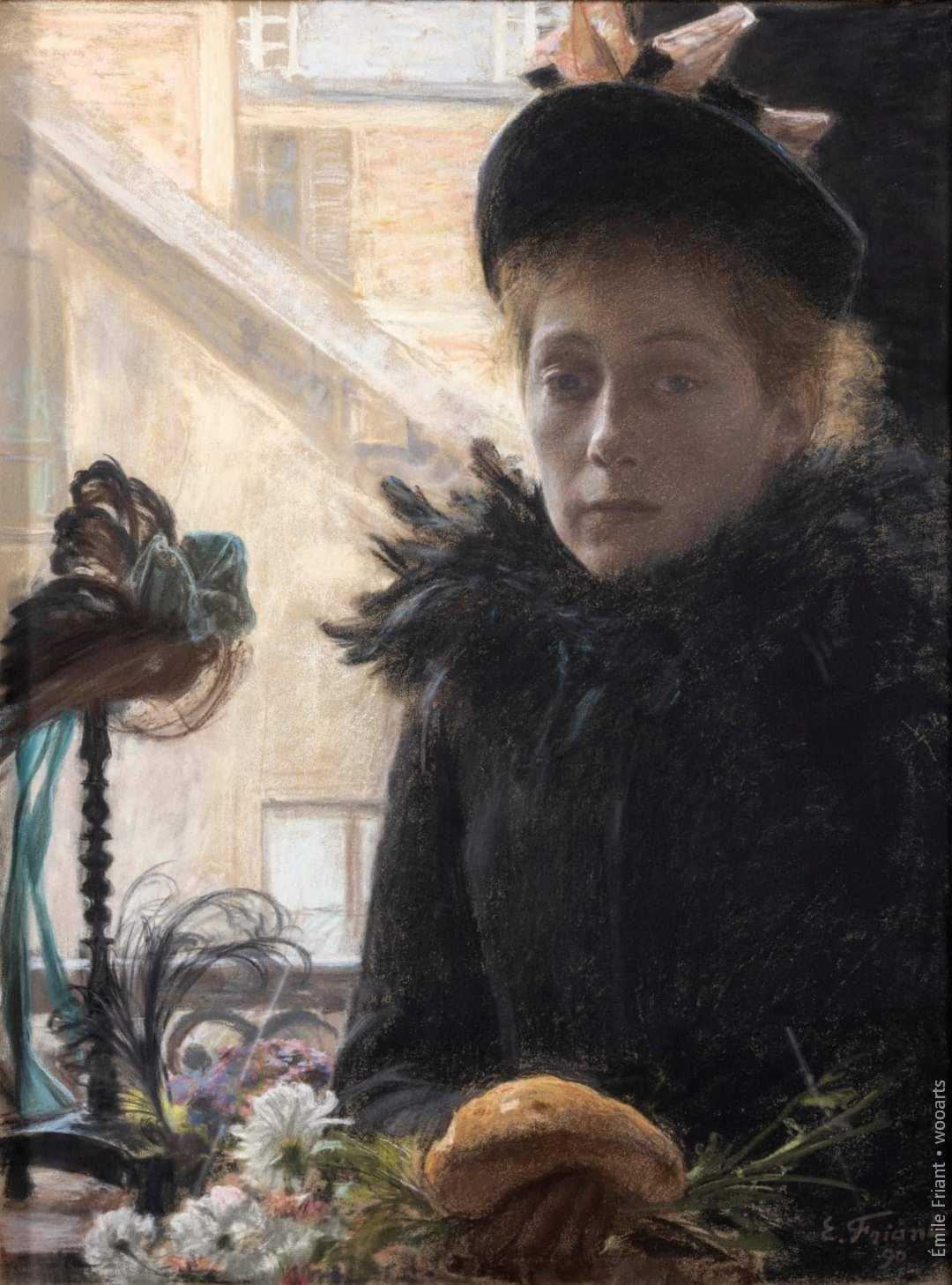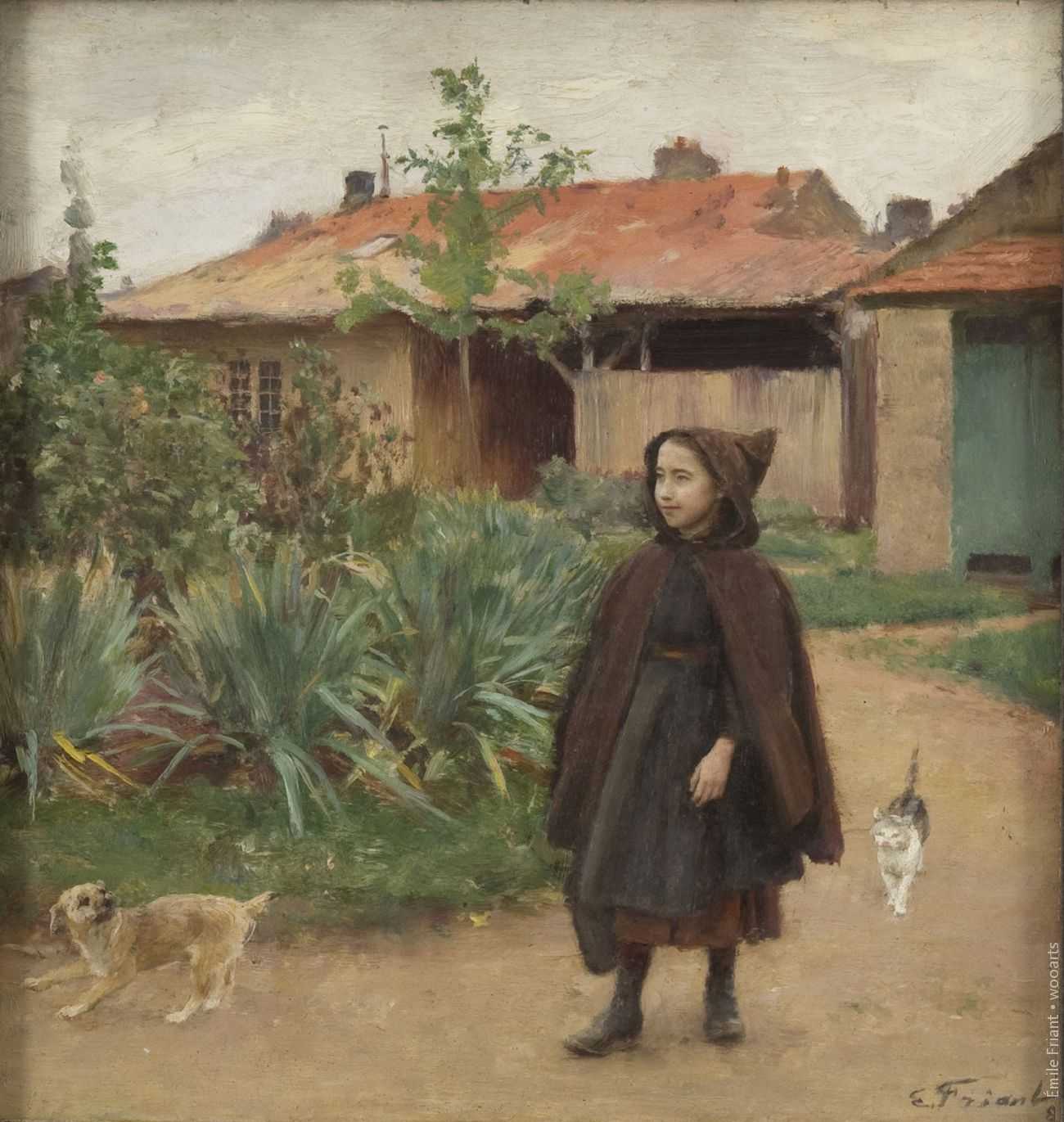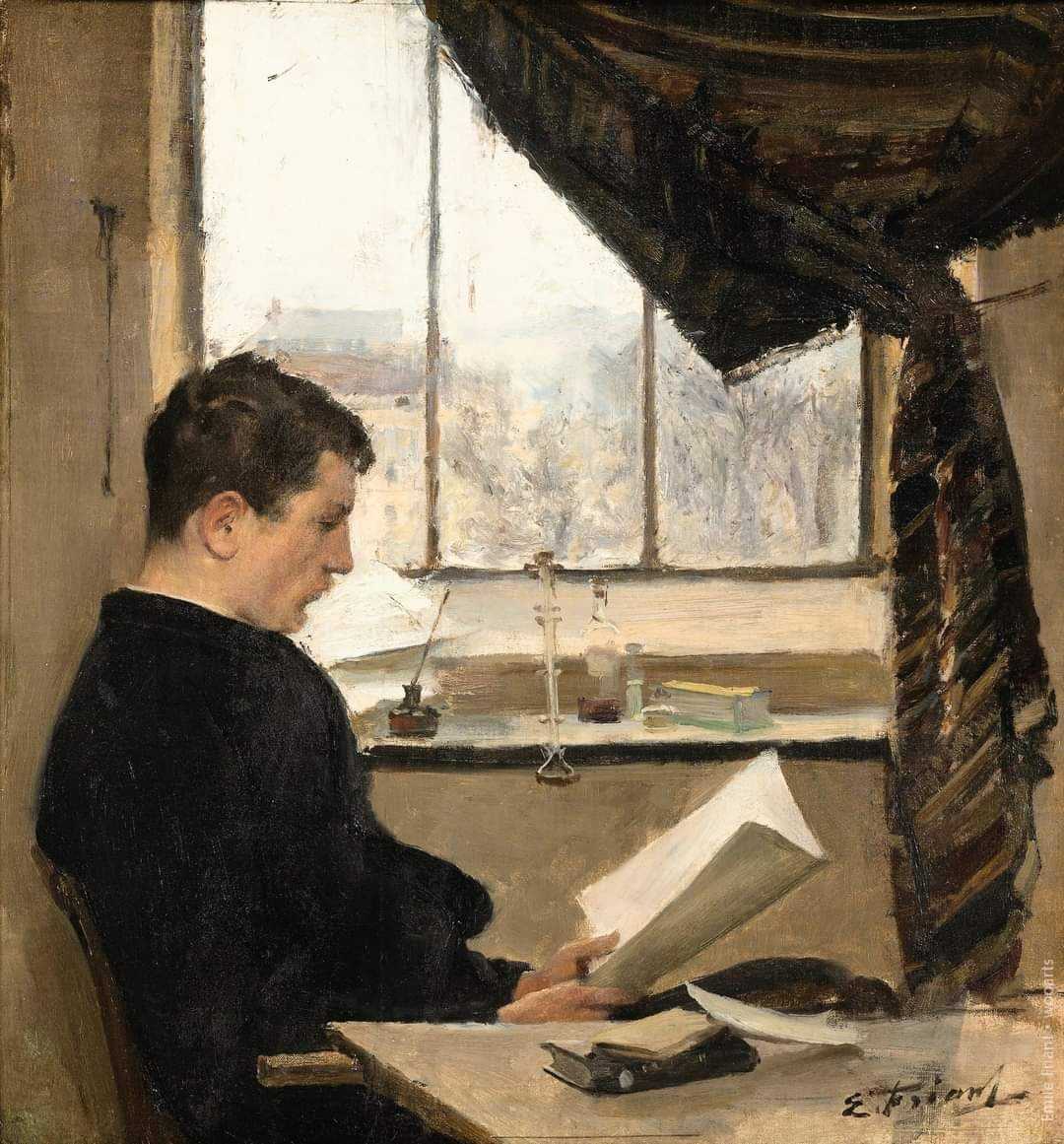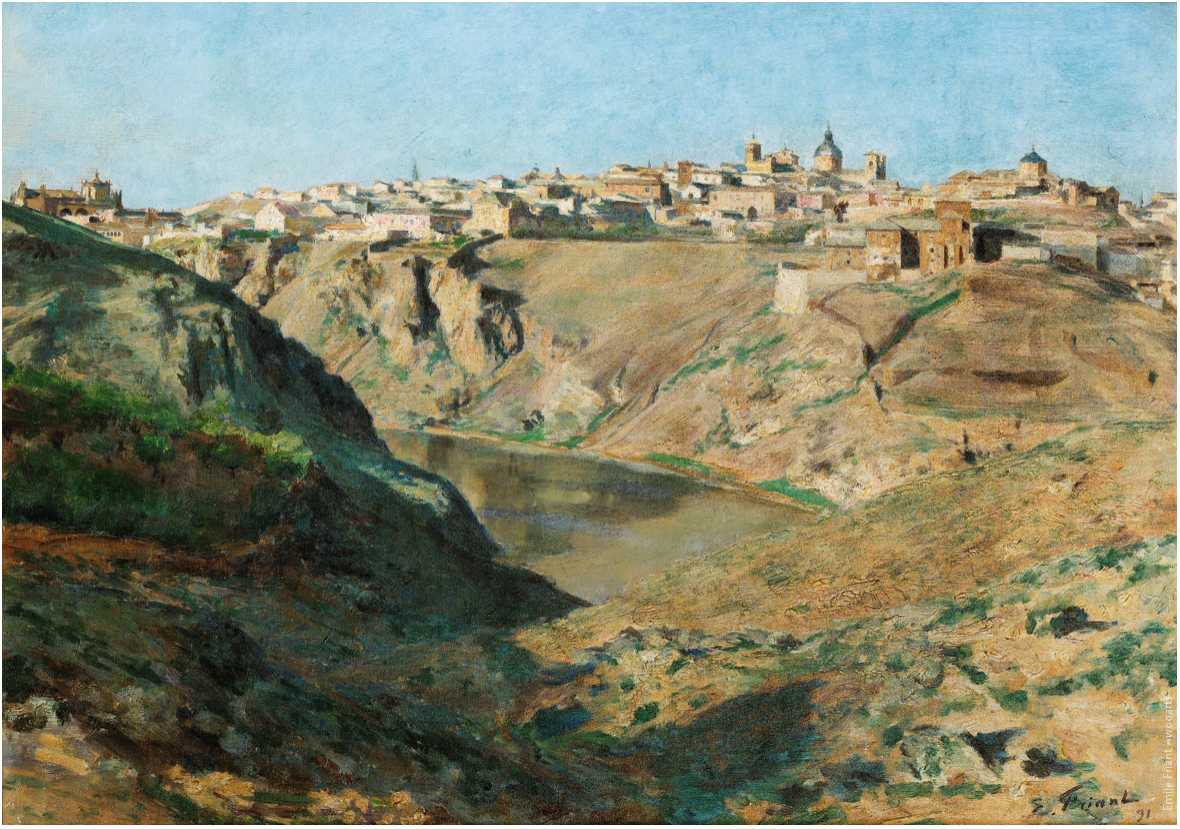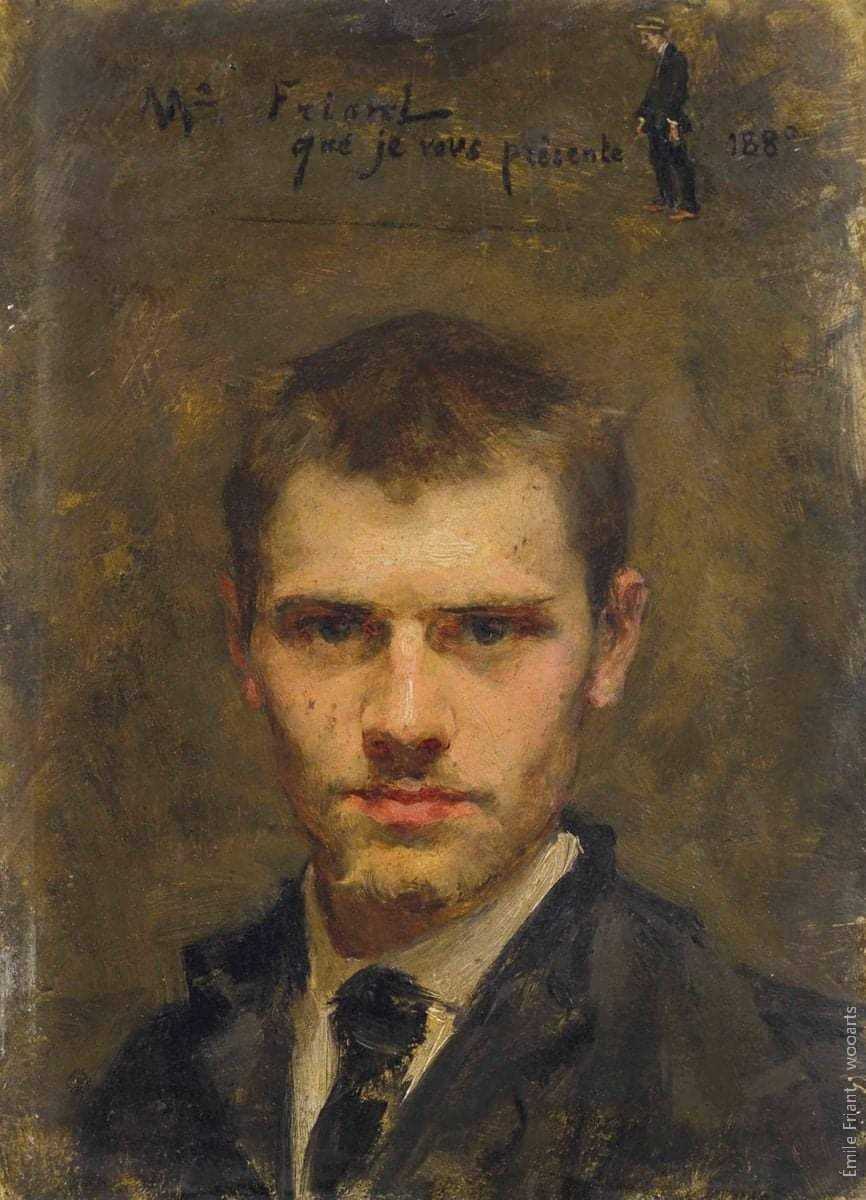– Victor Prouvé
Like many Naturalist artists of the nineteenth century, Émile Friant has been long overlooked, or simply forgotten, despite his overwhelming success and notoriety in his own time. A flurry of recent scholarship on Naturalism however, along with an important monographic exhibition at the Musées des Beaux-Arts de Nancy in 2016, has served to bring this “last naturalist” and his remarkable representations of the everyday social realities of the French Third Republic to the fore.[1]
Friant was born in 1863 in the town of Dieuze, located in Northeast France, and in 1870 his family was forced to flee to nearby Nancy after the incursion of Prussian soldiers and the German annexation of Alsace and Lorraine. There, his artistic ambitions were stoked from a young age and developed in tandem with the rise of the artistic culture of the city itself. Nancy emerged as a major artistic center, second only to Paris in late-nineteenth century France, and built upon the propagation of art of the everyday world in both painting and the applied arts of manufacture. As a teenager studying at the École des Beaux-Arts de Nancy and already exhibiting at the local Salon, he was awarded a scholarship to study in the Parisian atelier of the illustrious painter, Alexandre Cabanel. Equally influential in the shaping of his artistic sensibility were the friendships he forged in Paris with other artists from the Lorraine region—Victor Prouvé, Aimé Morot, and the great naturalist master Jules Bastien-Lepage. For his virtuoso scenes of rural, working class existence, he went on to win numerous prizes at the Paris Salon and the gold medal at the Exposition Universelle, and by the age of 25 he wore the ribbon of the French Legion of Honor.
Friant’s Naturalist commitment to depiction of the lives and leisures of the rural working classes was in keeping with the dominant mode of representation in the final decades of the century, typified by Bastien-Lepage in painting and Émile Zola in literature. An extension of a more politically radical and institutionally avant-garde Realist tendency from decades prior, the Naturalist impulse was, as art historian Richard Thomson has contended, an ideal aesthetic match for the ideology espoused by the Third Republic that had been established in 1870. By the 1880s, France had developed a coherent republican ideology that championed secularism, a commitment to scientific observation, and a good life defined by “family, work, love, death, and the value of life and sense of human destiny.”[2] As distinct from his Impressionist and Post-Impressionist contemporaries who employed an increasingly abstract painterly technique in conveying the dynamism associated with new forms of modernity, Friant carefully represented (albeit sometimes idealistically), emotions and everyday realities of rural living in this time of political and social regeneration, thereby demonstrating in both style and subject matter the tenets of a new national ideology.
By the 1890s, Friant’s paintings were installed in prominent European and American collections, and in 1923 he was promoted to the rank of commander in the French Legion of Honor and named to the Institut de France. Nevertheless, and despite his success on international markets, he wore these accolades lightly and remained ever devoted to the artistic culture of his home city of Nancy.
[1] Émile Friant, Le Dernier Naturaliste ? (Musées des Beaux-Arts de Nancy, 2016) [2] Gabriel P. Weisberg in Peinture et Art Nouveau, 64.
Émile Friant (16 April 1863 – 9 June 1932) was a French artist.
Friant was born in the commune of Dieuze. He would later be forced to flee to Nancy by the encroachment of the Kingdom of Prussia’s soldiers. He exhibited paintings throughout his lifetime at the Paris Salon.
Friant created works in charcoal, oil, and other media. He also used photographs to prepare finished paintings.
Early life
Friant was born in the commune of Dieuze in 1863. His father was a locksmith and mother a dressmaker. The wife of a chemist, Madame Parisot would hire the wife of Émile Friant’s father to design custom clothing. The Parisots took an early interest in the young Friant and treated him maternally, as they were without children of their own.
In 1870, with the defeat of the Second French Empire at hand as part of the then-ongoing Franco-Prussian War, annexation of Alsatia occurred and Dieuze was no longer under French state control. Intensely distressed by this, Parisot intended to leave the commune for Nancy, but died shortly before having the chance. In 1871, Madame Parisot fled with Friant to Nancy; his biological family would follow later.
Friant was sent to the lycée to learn Latin, as Madame Parisot intended for him to follow in her husband’s footsteps and become a chemist. Meanwhile, friends of his biological father had suggested sending him to a municipal school of art because of his skill with the brush. Because of his poor performance at the lycée, Friant requested permission to leave and focus on his art. His father agreed, and the young Friant was placed under the guide of a private tutor who would arrange his academic work so that time remained for painting. Under the guidance of Louis-Théodore Devilly, director of a school in Nancy and a proponent of realism, Friant learned the art of still life and landscape painting.
Friant painted La Petite Barque at the age of 15. It was exhibited in Nancy and quickly became the center of public intrigue. The municipal council granted him permission to travel to Paris a year later. There, he studied under Alexandre Cabanel, who tutored him in creating oil sketches of historical works. Friant, becoming disenchanted by the academic style of the atelier method, returned to Nancy where he worked with the painter Aimé Morot.
The Salon
In 1882, Aime Morot encouraged him to debut two of his works at the Salon: The Prodigal Son and Studio Interior, for which he received an honourable mention. The following year, Friant again presented at the Salon and took second place in the Prix de Rome concours. In 1884 he received a third class medal at the Salon with his painting Un coin d’atelier and in 1885 a second-class medal. He would form a lasting friendship with the actors Ernest and Benoit Coquelin. With the travel grant he received from the Salon of 1886, Friant traveled to and studied in the Netherlands. His portrait of the Coquelins’ mother reflects the influence of that trip. In 1889 he exhibited his 1888 painting La Toussaint at the Salon, for which he received a first prize. This painting depicts a revanchist patriotic image of a group of people visiting a cemetery in which the French victims of the Franco-Prussian War were buried. He received a gold medal for the same painting at the Universal Exposition of 1889, as well as the Legion of Honour. The painting was acquired by the State and added to the collection of the Luxembourg and is now on permanent display in the Musée des beaux-arts in Nancy. He received a second gold medal from the jury at the Universal Exposition in 1900, where he exhibited five paintings including La Discussion politique, Jours heureux and La Douleur.
Later life
Friant was appointed a professor of painting in 1923 at the École des Beaux-Arts in Paris, France, promoted to the position of commander in the Legion of Honour, and made a member of the Institut de France. In 1930 the art critic Arsène Alexandre published a comprehensive review of the art of Friant. In 1932, Friant fell to his death in Paris.
BIOGRAPHY – Emile Friant (1863 – 1932)
In the late nineteenth century Nancy emerged from beneath the shadow of Paris to establish itself as the second artistic center of France. One of the Nancéienne artists was Émile Friant, who began his artistic career at an extremely young age and rose to prominence with his version of naturalism which later manifested into a latent symbolism. It was noted that Friant “appears to have the sincerity at least as much as the ability to be a major artist, and we have confidence that he will remain faithful to art in a time when wealthy manufacturers have invaded the temple, giving young people the fatal example of rapid fortunes and superficial studies…” (quoted in L’École de Nancy : Peinture et Art Nouveau, ex. cat., Paris : Éditions de la Réunion des Musées Nationaux, 1999, pg. 130) Friant’s public acceptance would reach impressive levels, but despite consistent acclaim, he sought new methods of representation and various uses of media while promoting his work outside the Salon system.
Émile Friant was born April 16th, 1863 in Dieuze, a small city in eastern France near Nancy. His father worked at a locksmith’s shop while his mother was from a peasant family and from fourteen years of age had work as a dressmaker – certainly modest beginnings for an artist who would attain such prestige. As a young boy, Friant was sent to live with a wealthy client of his mother’s, Madame Parisot. After the Franco-Prussian war and the annexation of Alsace and Lorraine by Germany in 1871, the two fled to Nancy which was still part of France. This was an important move for Friant as Nancy and the École de Nancy would become a key artistic center of production during the Art Nouveau period. Friant attended the École de l’Est, where he began drawing courses and quickly showed his adeptness at drawing. Unfortunately, Madame Parisot hoped that he would pursue a career as a chemist, such as her late husband, and enrolled him in the school at Nancy where he learned Latin. But, Friant’s artistic faculties were already recognized and he enrolled in the École de dessin et de peinture de Nancy, becoming the favorite student of the director Louis-Théodore Devilly, an accomplished artist who studied under Eugene Delacroix. Devilly was sure to orient each student towards his individual goal, which was, for Friant, to concentrate purely on painting. Under Devilly’s tutelage, Friant painted studies of still life, landscapes, and afterward portraits which he sold for thirty francs apiece. Doing poorly at his lessons outside of art class, Friant convinced his father to allow him to focus on his artwork while attending special individual lessons for his schooling. In just a short period of time, Friant would begin exhibiting at the local Salon.
He was just fifteen years of age when he first exhibited at the Salon des Amis des Arts in Nancy and was referred to as “le petit Friant,” or the “little Friant”. That the organization permitted the entrance of a fifteen year old, exhibiting alongside established artists, attests to his immense talent. This exhibit created a demand for his work and he had continued success for the next year, until the city of Nancy granted him a scholarship which allowed him to relocate to Paris. He was sixteen and a half years of age, leaving his home and embarking on a journey alone. In the autumn of 1879, he settled in an apartment on the rue Notre Dame des Champs and entered the atelier of Alexandre Cabanel, a well-established academic painter.
During his first year in Paris, he met up with three other artists, Aimé Morot, Victor Prouvé, and Jules Bastien-Lepage, also from the Lorraine region. The artists formed a strong friendship and Morot, the older and more well-established artist of the group, encouraged Friant to end his academic training and complete his first two paintings, Intérieur d’Atelier (Interior of the Studio), and L’Enfant Prodigue (The Prodigal Son), which would later be accepted into the 1882 Salon. Despite having met other Alsatians in Paris, the young artist grew tired of the monotonous discipline of Cabanel’s atelier and returned to Nancy.
The seduction of Paris was too much for the young artist and after a short return to his home city of Nancy, Friant returned in 1881. He re-enlisted in Cabanel’s atelier and in 1883 he entered the Prix de Rome competition, awarded every four years to a young art student for study in Italy. He submitted Œdipe Maudissant son Fils Polynice (Oedipus Cursing His son Polynice) but received only second place. Despite losing the Prix de Rome, Friant had already become a portraitist and painter very much in-demand; he was commissioned to paint portraits for the artist Georges Jeanniot, the sculptor Ernest Bussière, Madame Majorelle and, among others, the count of Isnard, M. de Meixmoron. In 1885 he exhibited a second Intérieur d’Atelier (Interior of the Studio) which earned him a second medal and also placed him hors concours, or exempt from having to submit his works for approval by the Salon jury. This came after he exhibited in just four prior Salons. At the age of 22, it was an amazing accomplishment for a young artist from Nancy.
At the Salon of 1886 Friant introduced portraiture into his exhibition entries and was again handsomely rewarded, this time winning a scholarship provided by the French state which provided him the opportunity to travel. His first journey was to Holland where he studied the “little masters”, but he departed soon thereafter. His second and more important journey was to Tunisia, arriving after first passing through Rome and Naples. Of this journey Friant wrote in a letter dated to 1886 that “The sample of the Orient that I have experienced in the city of Tunis alone fills me with astonishment; it’s an entirely new world…an inexhaustible source of the picturesque.” (Arsène, Alexandre. Émile Friant : Sa Vie et son Œuvre, Paris: Braun, 1930, pg. 14) His voyage to Tunisia was part of an increase in interest from artists who sought new experiences in far-away lands. Upon his return Friant contributed to the new interest in Orientalism, the desire to portray the richness and beauty of other countries. These Orientalist artists, including Friant, became fascinated by everything around them; the different dress, the unique architecture, the brilliant light, the way of life, and all that was different from Europe. Friant used this journey to produce several paintings including Juive Tunisienne (Jewish Tunisian Woman), Souk des Tailleurs (Souk of the Tailors), Vue des Jardins à Tunis (View of the garden at Tunis), and Port d’Alger (Port of Algiers).
Upon returning to Paris he exhibited at the Salon of 1888 Réunion des Canotiers de la Meurthe (Reunion of the Meurthe Boating Party). This work had actually been completed prior to Friant’s journeys to Holland and Tunisia and explains why, after such an impressive voyage as Tunisia, he did not submit paintings inspired by this journey. The Canotiers “announced his mastery of genre painting on a large scale…This was the good life as prized by the Third Republic…when Canotiers was painted it upheld the standards of a prosperous bourgeois clientele.” (McIntosh, DeCourcy E., ‘Emile Friant: a forgotten realist of the gilded age’, The Magazine Antiques, April 1997, v151 n4, pg. 585) While he did not receive any awards for this work, it was very popular and encouraged him to begin another large-scale painting, La Toussaint (All Saint’s Day), which was awarded the grand prize at the Salon of 1889. Later that year he was also named a Chevalier de la Légion d’Honneur and exhibited ten works at the Exposition Universelle, for which he received a gold medal and another scholarship that he used to travel to Spain, Holland and Algiers. Following these accolades he “knew all the forms of glory from the citations in all of the journals” (Alexandre, Arsène, Émile Friant: Sa Vie et son Oeuvre, Paris: Braun, 1930, pg. 15).
This same year Jean-Louis-Ernest Meissonier asked him to become part of the Société Nationale des Beaux-Arts which would stage their own exhibitions on the Champ de Mars, separate from the annual Salon of the Société des Artistes Français. The Salons were organized so that each artist could exhibit virtually as many works as they chose, without the constraint of a jury. They were described by the critics as “more progressive than those of the Société des Artistes Français, and their opinion helped propagate the renown of Friant and others.” (Weisberg, Gabriel P., L’École de Nancy : Peinture et Art Nouveau, pg. 64) While Friant had already become a sought after artist, taking part in this Salon aligned him with other, more progressive, artists of the period.
To this point Friant had become a prolific artist in painting, drawing, and printmaking, though best known for his paintings. His portraits were widely sought after and his work was more naturalistic in terms of style. But in the mid 1890s Friant changed direction, best explained by Gabriel P. Weisberg in Peinture et Art Nouveau (pg. 64):
Adapting his naturalist talent to a symbolist end, he created images more susceptible to be associated with the implementation in Nancy of the politics associated with the authorities of the Third Republic, in particular the celebration of family values and the education of children. While Friant was not the inventor of this theme, his eagerness to try his hand with these themes reveals his desire to respond to the public demand for such images. Through the expositions of Salons of the Nationale, it became more and more evident that the artists associated naturalism with idealism or with symbolism in a deliberate effort so that painting ceased to represent specific in order to examine universal problems…This return of interest for mural painting and the concern for making art available to the people explains a fundamental aspect of the ambitions of the Third Republic. Not only did the authorities recognize that art could heal the cruel wounds from the Franco-Prussian war, but also that it could treat the important notions of family, work, love, death, and the value of life and sense of human destiny.
Thus Friant’s work began looking towards aspects of social amelioration, introducing symbolic references into an œuvre that had been, for the most part, a naturalistic and almost photographic representation of primarily daily bourgeois life. Nevertheless, appealing to an affluent clientele was never far from Friant’s mind as many of his later Salon entries were portraits commissioned by wealthy patrons from Nancy and its environs.
Little is systematically known about the latter part of Friant’s life. During the 1890s he dealt with several American patrons who wanted to either commission a piece or exhibit his work. One work Les Fiançailles (The Engagements) was chosen for the inaugural Carnegie Annual Exhibition in 1896. He began working steadily with Roland Knoedler, a major art dealer in the period, who put him in contact with Henry Clay Frick, a wealthy art collector whose collection of Old Masters later established the Frick Museum in New York City. But during the 1890’s, Frick also developed a collection of contemporary painters, which included Friant, works which Frick kept in his home in Pittsburgh, before he moved onto New York City.
In addition to his collaboration with American patron and dealers, in 1895 Friant completed several panels which decorated the Hôtel de Ville in Nancy and also exhibited several drawings at the Exposition de la Société des Aquarellistes at Nancy. Significantly, Friant maintained a staunchly academic manner of creativity as applied to portraits at a time when this type of painting came under attack from the abstract modernists. Throughout the following years Friant continually exhibited at several Salons and exhibitions including the Salon Nationale in Paris and the Salon of Nancy. In 1906 he was named professor of drawing of the École Nationale des Beaux Arts where he continued to teach younger artists the importance of substantial academic method linked to drawing. He died in 1932.
The life and work of Emile Friant presents an artist who was equally influenced by Paris as well as by his home city of Nancy. But he remained attached to a more academic style of naturalism which appealed to a public both in France and abroad as he demonstrated that the training he received in Nancy could be used to maintain a substantial career.
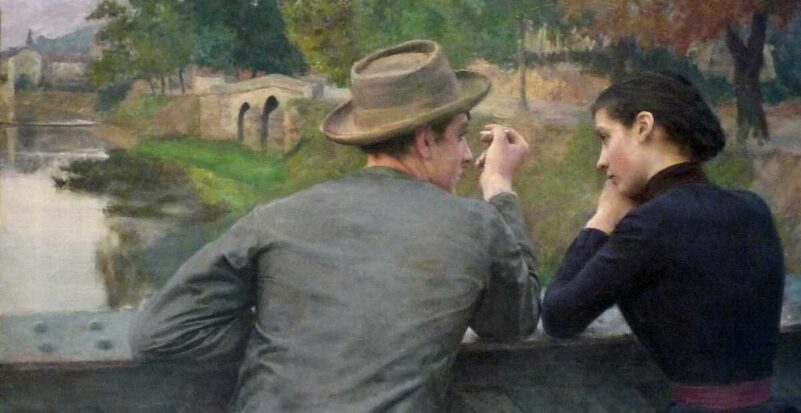
View Émile Friant Paintings
via: wikipedia
via: https://www.gallery19c.com/artists/103-emile-friant/overview/
via: rehs

